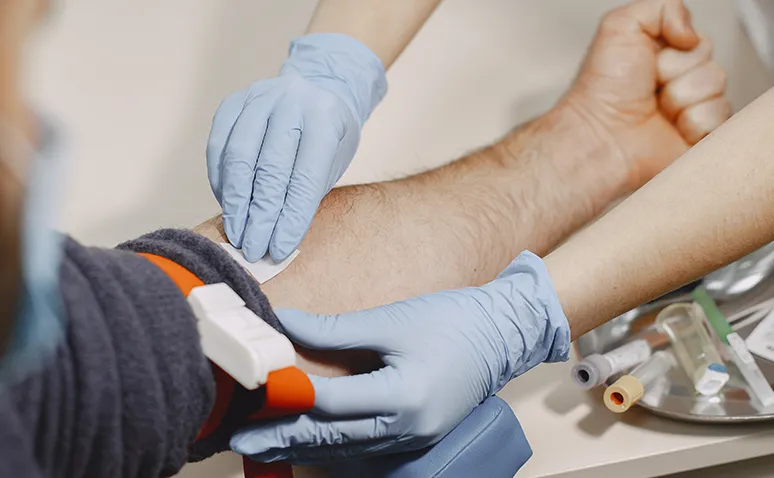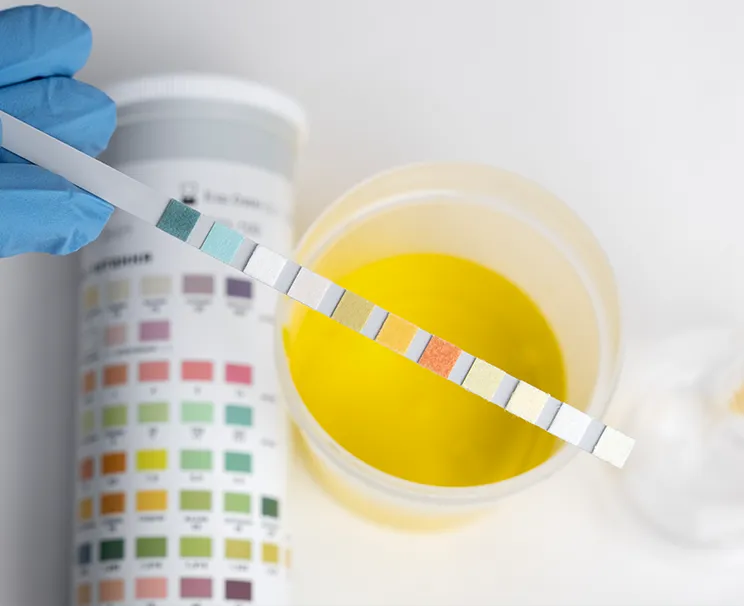Cystic fibrosis reference range is an important indicator in the diagnosis of the disease. Especially the chloride level measured by the sweat test provides clear information about the presence of the disease.
Cystic fibrosis reference range of 60 mmol/L or higher is generally considered positive. Values between 30-59 mmol/L are considered borderline and require further testing. When values are below 30 mmol/L, the likelihood of cystic fibrosis is low, but clinical symptoms should not be ignored. Therefore, not only test results but also patient history and symptoms should be evaluated together.
What Is the Cystic Fibrosis Reference Range?
Cystic fibrosis is a hereditary disease that causes abnormalities in mucus, sweat, and digestive fluids. This condition can have destructive effects, especially on the lungs and digestive system. As a genetic condition, it may show symptoms from birth and usually follows a progressive course.
Various tests are used in the diagnostic process, and they are highly effective in confirming the presence of the disease. In patients with cystic fibrosis, the sweat test plays a critical role. When applied to individuals prone to respiratory diseases, a high salt concentration in the sweat is a key indicator in diagnosis.
The symptoms of the disease generally appear in childhood. Persistent cough, failure to gain weight, and frequent respiratory infections may be associated with this disease. The symptoms may vary in severity from person to person, but if left untreated, the quality of life can significantly decrease.
Treatment options include respiratory physiotherapy, medication, and nutritional support. This helps patients maintain their daily lives more comfortably and reduces the risk of complications.
The tests used in the diagnosis of cystic fibrosis provide critical information about the course of the disease. In cases of clinical suspicion, advanced screening programs are initiated. This allows for early detection and timely initiation of treatment.
Important values and monitoring for cystic fibrosis:
- Sweat test result ≥60 mmol/L: Considered positive for cystic fibrosis.
- Sweat test result 30-59 mmol/L: Borderline value; further testing required.
- Sweat test result <30 mmol/L: Cystic fibrosis can be ruled out, but clinical findings should still be considered.
- Detection of a mutation in the CFTR gene through genetic testing supports the diagnosis.
- With regular check-ups and monitoring, the life expectancy and comfort of individuals with cystic fibrosis can be improved.

How Is Cystic Fibrosis Diagnosed?
When diagnosed early, cystic fibrosis can be brought under control and positively impact life expectancy. Newborn screening is one of the most effective methods for early diagnosis. Especially in cases with a family history, tests done in the first days after birth are very important. With these tests, the disease can be detected even before symptoms appear.
The diagnosis process usually consists of several stages and involves different methods. The sweat test is the most commonly used diagnostic tool, measuring sodium and chloride levels in the blood to support the diagnosis. If the result is borderline, additional tests are required to confirm. This prevents false diagnosis.

In suspected cases of cystic fibrosis, laboratory and genetic analyses are also used. Detection of mutations in the CFTR gene plays a crucial role in confirming the disease. Genetic testing helps identify both affected patients and carriers, enabling informed steps in family planning.
Clinical signs are also considered in the diagnosis of cystic fibrosis. Persistent productive cough, difficulty gaining weight, and recurrent respiratory infections are key indicators. In these situations, doctors may resort to further evaluations that reinforce suspicion.
Diagnostic methods used in cystic fibrosis:
- Newborn screening: Blood sample from the heel is used to determine the risk of disease.
- Sweat test: Measures chloride and sodium levels; most common diagnostic tool.
- Genetic test: Identifies mutations in the CFTR gene for a definitive diagnosis.
- Clinical evaluation: Symptoms and family history are analyzed together.
Accurate diagnosis is the foundation for implementing effective treatment plans. For this reason, individuals at risk should be tested at an early age.
Cystic fibrosis can be diagnosed shortly after birth through newborn screening; however, mild cases may not show symptoms until later in life.
No, the sweat test is not painful; it only involves collecting a sweat sample.
Genetic testing is recommended for individuals with a family history of cystic fibrosis, those with borderline sweat test results, and people at risk of being carriers.
Once a definitive diagnosis is made, a treatment plan is developed, including respiratory physiotherapy, nutritional regulation, and regular medical follow-up.
Results depend on the laboratory’s capacity, but most tests are completed in a few days. Genetic analysis may take longer.
No, cystic fibrosis is a genetic disorder and is not contagious from person to person.
For reliable results during the cystic fibrosis diagnosis process, you can contact Denge Tıp.










